The rise of large language models (LLMs) has transformed the field of Natural Language Processing (NLP), allowing machines to achieve a deeper understanding of human language. As data scientists, it’s important to understand the underlying technical mechanisms that make these advancements possible, as well as how to implement them effectively.
In this article, I will break down the key technical aspects of LLMs mentioned in the presentation, ranging from model inputs to fine-tuning methods such as soft prompts, along with specific NLP tasks such as text generation, named entity recognition (NER), and zero-shot inference.
Core Components of LLMs
At the heart of any LLM are the inputs, typically tokenized text, which serve as the primary source of data for the model. These inputs are then processed through multiple layers of a Transformer architecture, which consists of self-attention mechanisms designed to capture long-range dependencies in text.
The key LLM functionalities include:
Translation: Translation tasks are handled using sequence-to-sequence architectures based on Transformer models. The model processes input text in the source language and generates output text in the target language by leveraging encoder-decoder attention mechanisms. The encoder maps the input to hidden representations, while the decoder converts these into the target language.
Text Summarization: Summarization models like BART (Bidirectional and Auto-Regressive Transformers) and PEGASUS fine-tune LLMs by learning to compress large pieces of text into shorter summaries. This typically involves training the model on a masked language model objective (MLM) where sections of the input text are masked and the model must predict these masked tokens from context.
Question Answering Systems (QA): QA models, such as T5 (Text-To-Text Transfer Transformer) and GPT-3, generate responses to questions based on a context passage. These systems rely on pre-trained transformers, which are fine-tuned using labeled datasets like SQuAD to improve performance. Techniques such as retrieval-augmented generation (RAG) may be used to augment the model with external knowledge bases, improving its ability to provide accurate responses.
NLP Tasks and Techniques
Beyond core language tasks, LLMs can be applied to various NLP-specific challenges. Let’s look at the technical aspects of some key NLP tasks covered in the presentation:
Sentiment Analysis: This involves classifying text based on the emotional tone (e.g., positive, negative, neutral). The underlying models are usually pre-trained on massive text corpora and fine-tuned using datasets such as IMDb, which contain labeled sentiment data. Popular models like BERT (Bidirectional Encoder Representations from Transformers) use fine-tuning techniques, where the final layers are trained on the specific task of predicting sentiment based on contextual embeddings.
Named Entity Recognition (NER): NER models are designed to locate and classify entities in text (e.g., people, locations, organizations). This is typically formulated as a sequence labeling problem, where models like BERT or RoBERTa are fine-tuned using labeled token-level data. The model outputs probability distributions over possible entity tags for each token in the input, enabling it to classify sequences at the word level.
Text Generation: Text generation models, such as GPT-3, are auto-regressive models that predict the next word in a sequence based on previously generated tokens. The model uses decoder-only transformers, where the next token is predicted based on the context of prior tokens, leveraging a mechanism called causal attention. This allows for tasks like content creation, story writing, and code generation to be automated.
Zero-Shot Inference: One of the most groundbreaking capabilities of modern LLMs is their ability to perform zero-shot learning, where the model can generalize to new tasks without any explicit task-specific training. Zero-shot learning is achieved using models like GPT-3, which rely on massive-scale pre-training and prompt engineering. For example, in zero-shot classification tasks, the model is prompted with examples of task descriptions, and its output is interpreted as the task-specific label.
Soft Prompts: Efficient Fine-Tuning
A particularly innovative technique mentioned in the presentation is soft prompting. This technique involves using learnable prompts to guide the model’s behavior without modifying the model’s pre-trained weights.
In traditional fine-tuning, we update the entire model’s weights using task-specific data. However, this can be resource-intensive and time-consuming, especially for large models like GPT-3. Soft prompts, on the other hand, introduce trainable embeddings that act as input tokens, effectively altering the model’s behavior without altering its core parameters.
The key advantages of soft prompting include:
Parameter Efficiency: By only optimizing the soft prompts (small vectors), we drastically reduce the number of parameters that need to be updated during fine-tuning. This makes it feasible to adapt large models for specific tasks on smaller datasets.
Task Adaptation: Soft prompts allow the same base model to be adapted to multiple tasks with minimal overhead. This is particularly useful for multi-task learning, where the same model can be used for classification, text generation, and more by switching out the soft prompts.
Practical Considerations
From a data scientist’s perspective, implementing these techniques requires a deep understanding of model architecture, pre-training objectives, and fine-tuning strategies. Some considerations for practical implementation include:
Data Preprocessing: Tokenization is a critical step before feeding data into LLMs. Models like BERT use subword tokenization (e.g., WordPiece) to handle out-of-vocabulary words, while GPT-3 uses byte-pair encoding (BPE). Proper tokenization ensures that the model captures word meanings effectively while maintaining computational efficiency.
Model Selection: Depending on the task, different LLM architectures might be preferred. For sequence generation, auto-regressive models like GPT work best, while BERT-based models are more suited for classification and token-level tasks.
Fine-Tuning Strategies: When fine-tuning, it’s important to strike a balance between overfitting and generalization. Techniques such as early stopping, learning rate scheduling, and dropout are commonly used to improve generalization performance during fine-tuning.
Conclusion
Modern large language models have revolutionized the field of NLP, providing advanced capabilities such as text generation, zero-shot inference, and soft prompting. As data scientists, our ability to harness these techniques requires a deep understanding of the underlying model architectures and training techniques. By mastering the nuances of Transformer-based models and efficiently fine-tuning them with techniques like soft prompts, we can unlock powerful applications across industries ranging from healthcare to legal document automation.
LLMs and their applications are still evolving, and keeping up with these technical advancements will be key for driving innovation in the world of data science.

